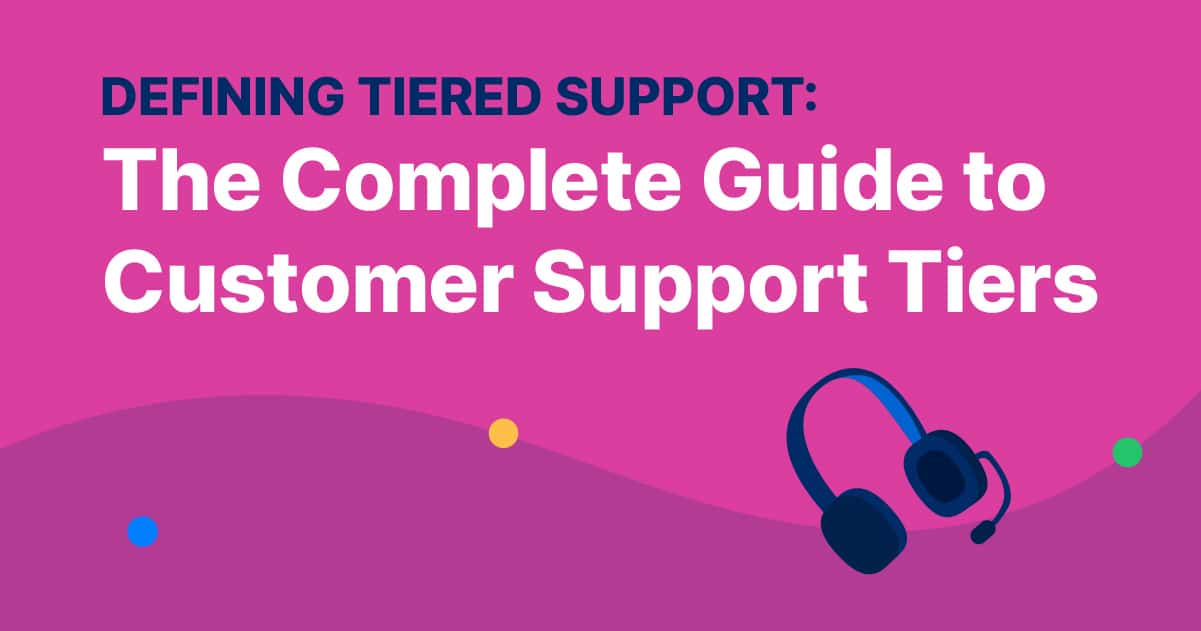Tiered support is an integral part of any customer service strategy. A tiered system in your helpdesk places customers on different levels based on their needs, allowing companies to provide tailored customer support. To make sure your tiered support system works appropriately, it’s essential to understand the basics and how to implement it effectively. This guide will help you better understand support tiers and how it can help you provide better customer service. Let’s dive in!
What is tiered support?
Tiered support is a structured system designed to quickly and efficiently address customer queries. By having multiple tiers of support, businesses can allocate resources more effectively to ensure the best possible outcome for customers’ complaints or issues.
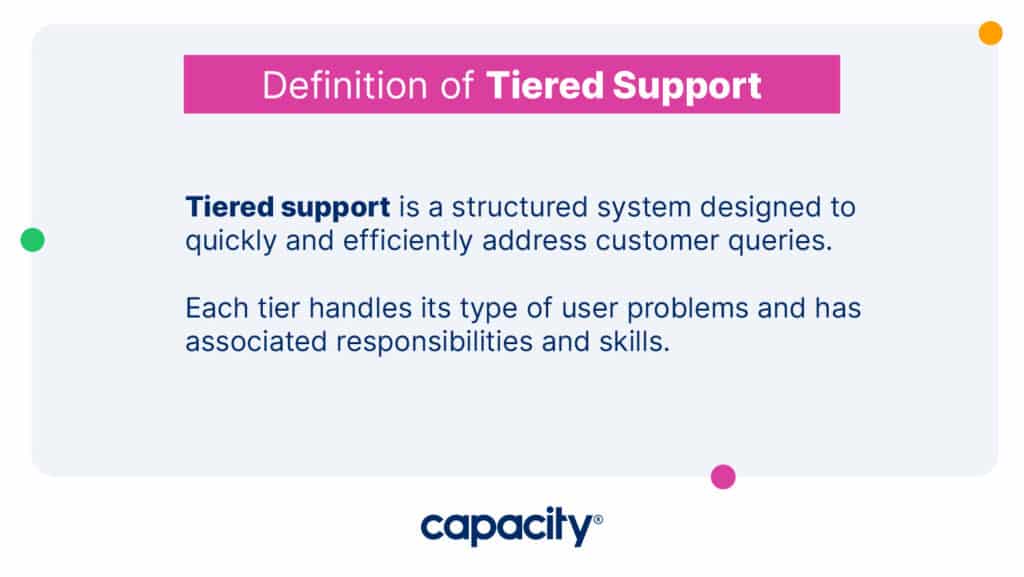
A helpdesk tier is a level of support that serves a different purpose. Some helpdesks use two tiers, while others may have five or more. Each tier handles its type of user problems and has associated responsibilities and skills. Higher-tier support teams address advanced issues like software repair and in-depth analysis.
What is a tiered support model?
A tiered support customer service model can provide your business with an efficient way to distribute resources, establish escalation paths, and ensure that each customer query receives the appropriate degree of attention. This system provides a more organized framework for customer inquiries while improving overall performance.
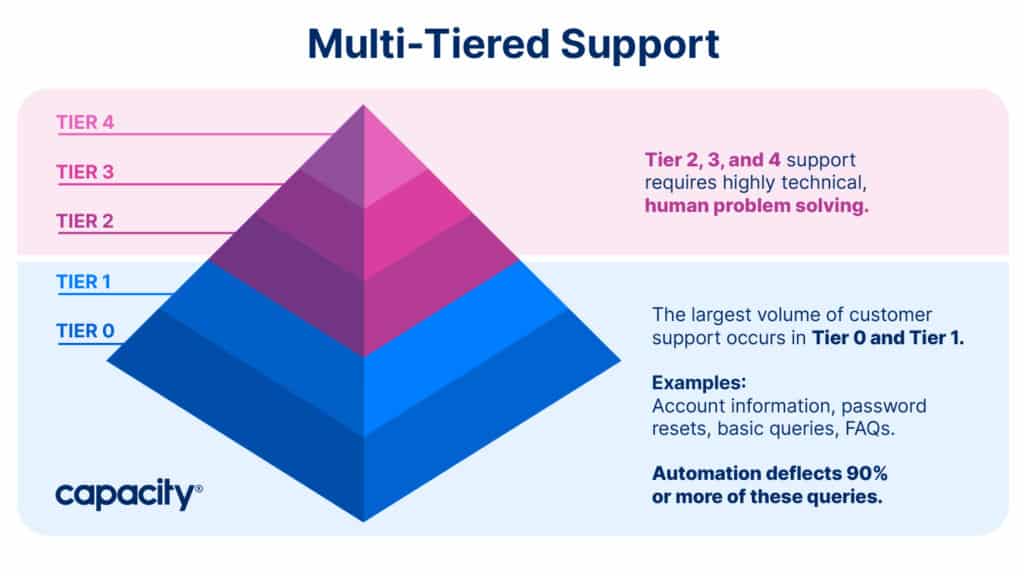
How customer support tiers work
The idea behind support tiers is simple: each tier handles a specific simple technical support while Tier 3 handles advanced technical issues like diagnostic testing and investigating elevated issues. When a customer makes a new request, it gets routed to the help desk tier with the appropriate skills and knowledge.
The tiers are also often set up in a way that prioritizes customer requests. So, for example, Tier 2 will only start working on an issue once Tier 1 has resolved it or determined that it can’t be handled at their level. This ensures that all help desk requests are handled promptly.
Companies can also use the helpdesk tiers to route helpdesk tickets based on other criteria, such as the type of customer or business unit making the request.
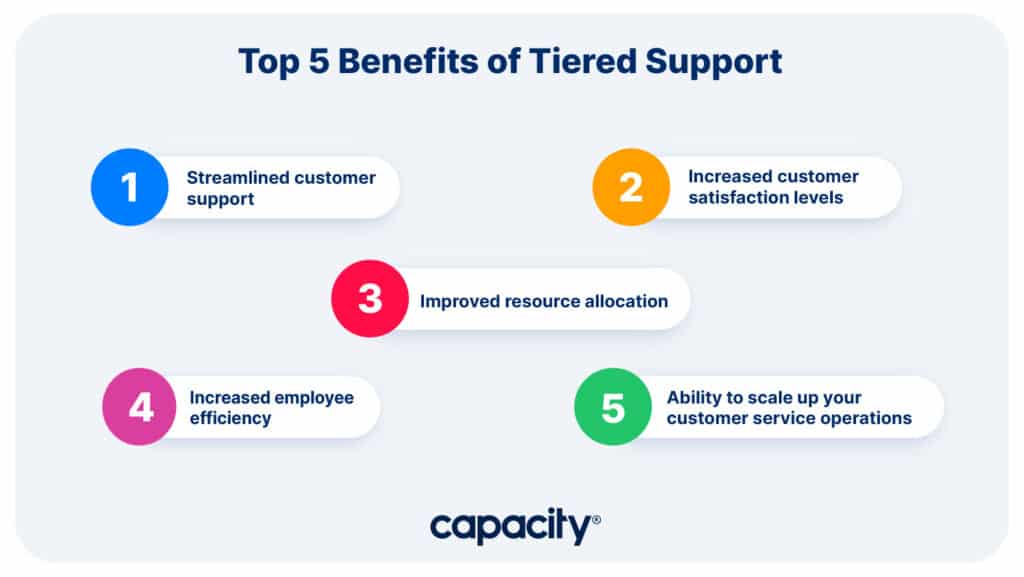
Top 5 benefits of tiered support
Tiered support provides several advantages for businesses looking to improve their customer service. Here are a few of the top benefits:
1. Streamlined customer support
Tiered support provides a comprehensive system for customer inquiries, allowing you to quickly and efficiently address each issue. With multiple support tiers and an established escalation path, you can instantly identify the most appropriate help desk tier for any request or problem. This helps to ensure that agents handle each query efficiently and promptly, providing customers with a better overall experience.
2. Increased customer satisfaction levels
Tiered support ensures customers are happy with their service experience by reducing the time taken to address customer queries. By providing multiple levels of support, businesses can quickly and effectively address customer concerns, while the tiered structure helps to prioritize requests so that all questions are handled promptly. This leads to increased customer satisfaction as customers feel heard and supported, leading to higher customer loyalty rates and improved brand reputation.
3. Improved resource allocation
Using tiered support allows orgs to allocate resources more effectively to ensure the best possible outcome for customer queries or issues. With helpdesk tiers, support teams are better equipped to handle the specific type of requests or issues that they are assigned to, allowing them to provide more consistent and reliable customer service.

Automate Your Work
Capacity’s enterprise AI chatbot can help:
- Answer FAQs anytime, anywhere
- Find relevant documents within seconds
- Give surveys and collect feedback
4. Increased employee efficiency
By having a tiered support system, teams can focus on the tasks they have been trained for, ensuring efficient use of time and resources. This results in higher levels of employee productivity as teams can efficiently handle customer queries and quickly identify issues that require further investigation or escalation.
Employees can operate more efficiently when tiered support is in place as they can focus on their area of expertise. Additionally, tiered support ensures that customer queries are routed to the most appropriate help desk level, allowing employees to provide the best customer service experience.
5. Ability to scale up your customer service operations
Tiered support allows businesses to expand their customer service operations as needed quickly. As the business grows, more help desk tiers can be added to accommodate increased customer demand and ensure that customer queries are handled promptly and effectively.
What are the three categories of customer support triage?
Triage is a term that originated in the medical field to describe the process of prioritizing patients based on the severity of their condition. The goal is to provide the most urgent cases with immediate care while ensuring that less critical issues do not have to wait for an extended period.
In recent years, the term has been used more broadly to describe any situation requiring prioritizing tasks or resources. For example, businesses may use triage to prioritize customer support requests when they are overwhelmed with inquiries.
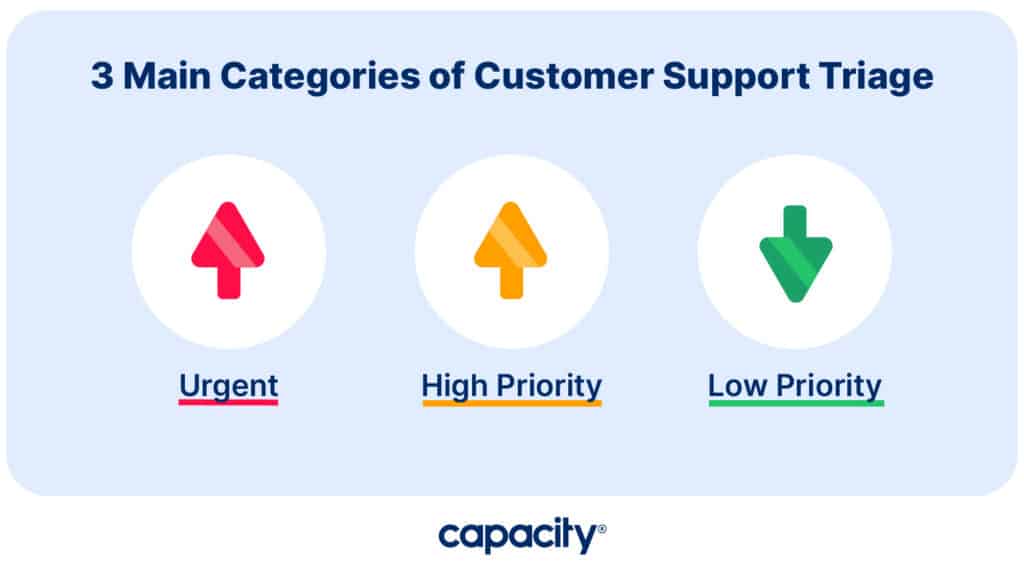
There are three main categories of customer support triage:
- Urgent: This category is for issues that agents must resolve immediately and cannot wait. Examples include a customer who needs help logging in to their account or a website down.
- High priority: This category is for important issues that can wait for a few hours or days. Examples include a customer who wants to change their shipping address or a website with a broken link.
- Low priority: This category is for issues that are not urgent and can wait for an extended period. Examples include a customer who questions how to use a product or a website with cosmetic errors.
To evaluate which issues are urgent, high priority, or low priority, businesses need to consider multiple factors, such as the impact of the problem and the resources required to resolve it. The triage process can help businesses automate their support workflow and improve efficiency when used with customer support tools like a helpdesk.
Questions to consider when setting up tiered support
- What kind of technical support team does the company need? For example, are there help desk tickets for technical issues and requests requiring consulting services?
- How many support tickets does the company anticipate receiving each week or month? This will help determine how many help desk tiers it will need. For example, if a company gets 50 help desk tickets daily and only two full-time agents working, it will need at least three tiers.
- How complex are the tickets? This will help determine the skill level required for each tier. For example, if most help desk tickets are password resets, tier I can be staffed by lower-skilled agents.
- What kind of customer service does the company want to provide? Helpdesk teams can use the helpdesk tiers to prioritize customer requests. For example, the business may wish to have a Tier 1 that responds to all requests within 24 hours or a Tier 3 that supports customers with premium accounts.
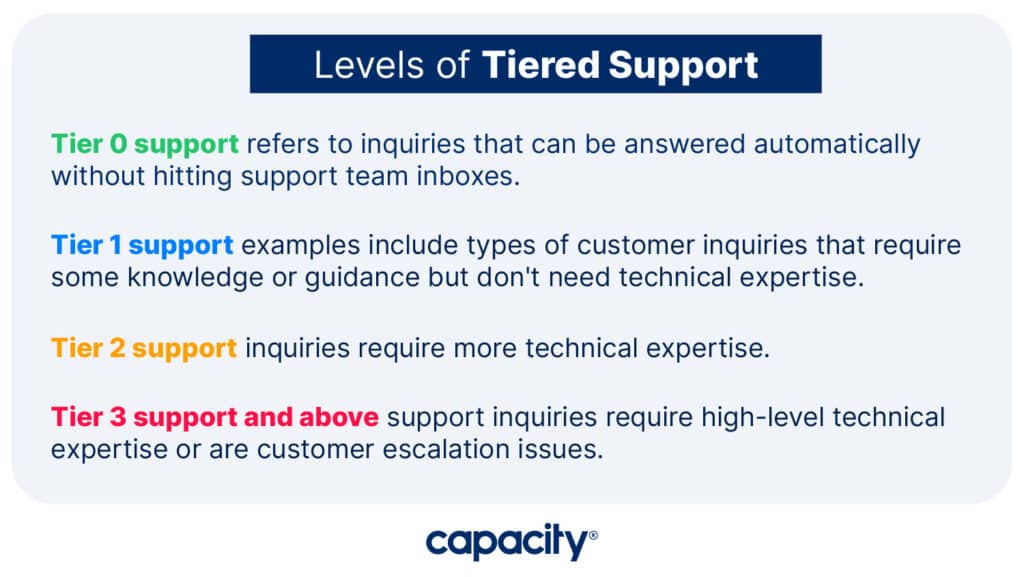
4 customer tiered support examples
Let’s take a look at some use case examples of each support tier:
Tier 0 support examples
Tier 0 support refers to the support that can be answered automatically without hitting agents’ inboxes. Here are a few examples:
- Offering self-service resources, such as FAQs, tutorials, and help articles
- Using technology like an email interceptor to get to inbox zero
- Setting up automated customer service bots or chatbots to answer simple questions
Tier 1 support examples
Tier 1 support examples include types of customer inquiries that require some knowledge or guidance but don’t need technical expertise. These questions are still basic and can be automated with automated ticketing system technology. Here are a few examples:
- Answering questions about products and services
- Assisting customers with setting up accounts
- Providing basic troubleshooting advice for common issues
Tier 2 support examples
Tier 2 support examples are inquiries that require more technical expertise. These issues often take longer to answer and need a more in-depth understanding of the product or service. In some instances, AI chatbots can automate these inquiries. Here are a few examples:
- Guiding customers on how to use specific features
- Troubleshooting complex customer problems
- Dealing with customer complaints about product functionality

Automate Your Work
Capacity’s enterprise AI chatbot can help:
- Answer FAQs anytime, anywhere
- Find relevant documents within seconds
- Give surveys and collect feedback
Tier 3 and above support examples
Tier 3 and above inquiries require high-level technical expertise or are customer escalation issues. These can be difficult to answer and may take several days or weeks to resolve. Here are a few examples:
- Investigating product defects
- Identifying root causes of customer issues
- Creating custom solutions for customer problems
Automate tiered support with Capacity
Capacity is a support automation platform that automates customer support processes and workflows. It helps companies manage and monitor their technical support team, making it easy to see which support teams are overloaded and need more help. Capacity provides everything you need to automate support and business processes in one powerful platform.
Ultimately, Capacity’s automation capabilities make it the perfect platform for managing a complex helpdesk with multiple tiers. With Capacity, a company can easily create and assign tickets to the appropriate tier, routing them automatically based on predefined criteria. This ensures the most qualified team member handles that ticket, improving customer satisfaction and reducing helpdesk costs.
Half of all businesses spend $100 or more per hour on customer support. Save money with Capacity and try it for free today!


